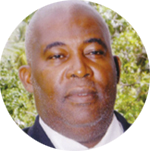
WELCOME students to another lesson in the Open School for the second term for the academic or school year 2023 to 2024. The school is open to parents, guardians, teachers, students and members of the public. It is my hope that students will acquire knowledge and skills on Jolly Phonics in the Jolly Phonics Classrooms.
At the end of the lesson, students should be able to (1) Explain the phrase Jolly Phonics. (2) Name two classroom activities that students could be engaged in during Jolly Phonics.
The Ministry of Education, through the Curriculum Unit has begun to train teachers in the use of the Jolly Phonics approach.
Now phonics has been taught in our schools from the very beginning of schooling. However, educators, through intensive research, have attempted to transform our education system by presenting new approaches. The Jolly Phonics approach is one such attempt.
Now what exactly is phonics? Phonics is a way of teaching children how to read and write. It helps children hear, identify and use different sounds that distinguish one word from another in the English Language.
Now what exactly is Jolly Phonics? Jolly Phonics is a fun and child centred approach to teaching literacy through synthetic phonics, with actions for each of forty-two letter sounds. The classroom teacher will teach the approach by allowing the students to use many senses, mainly, the sense of hearing, the sense of sight and the sense of touch.
In a previous article, I explained that literacy is the ability to read and write. Now reading and writing are very important skills in learning. Whether it is in student learning or adult learning.
Indeed, the letter sounds are taught in a particular order (not the a, b, c, or alphabetical order). This process helps children to begin building words as early as possible.
Now there are five skills taught in Jolly Phonics: Learning the letter sounds; Learning how the letter are formed; Blending of letters; ; Identifying the sounds in words; And there are sounds in tricky words.
Let me inform you that the letters of the alphabet have sounds. Because I am writing, I can’t make these sounds. However, the following are some letters, each of which would have a sound: (s, a, t, j, g, b,). Can you make those sounds?
Indeed, the letters could be presented on picture flashcards which could help the students in making the sounds.
Now let us take the letter ‘a’. Let us focus on the sounds of that letter. In the initial or beginning sound of the word “about”, an initial sound is “er”; In the word “agent” the letter ‘a’ calls its name ‘a’; In the word “attribute”, the letter ‘a’ takes the sound “are”. Very simply, the letter ‘a’ is pronounced “a”, “er” or “are” depending on the word chosen or being read.
The class teacher, depending on his or her level of training, may be able to use some creative games that would help students memorize those sounds and to use them effectively.
We come now to letter formation. Teacher is required to use his or her creativity in this activity. He or she may use string with which the learner would be required to form letters; Sand paper could also be used to carve out letters and allow students to feel the shape or formation of the letter; beach sand could also be used for learner to form letters with the use of their finger; And the teacher may use the chalkboard to shape letters for the students to reproduce in the exercise books.
These are called sensory methods, meaning that the students or learners would be required to use their senses.
We come now to blending. This is the point at which the teacher is required to teach the students how to blend the sounds together to read and write new words.
For example, in the word “stop”, the teacher will teach the learner to use the letter sound ‘s’ and the letter sound ‘t’ to blend. By that I mean the two letters will make one sound; “st”. The student may immediately identify and call the new words: stay, stand, start and so on.
We come now to identifying the sounds in words, blending. Let me take this opportunity to tell you that that many words have an initial or beginning sound, a medial or middle sound and an ending sound.
Some of these words are: ‘cr’ and ‘ab” would produce crab; ‘co’ ‘co’ ‘nut’, three sounds to make up the associated words.
Now, having learnt the blends, students would then be able to segment the following words: coconut, crab, trap, sting and so on.
No doubt, there are some tricky words in the English language which the teacher would be required to teach separately. Some of these words are also, any, only, right, father, every, when, would, love, there, eight and several others. These words are taught as sight words. Teacher may show the word on a flash card and then say the sound for students to repeat. Indeed, there many creative ways of teaching sight words, and many teachers have been doing excellent work particularly in the infant school.
Indeed, students who have developed those literacy skills are well on their way to being very good spellers and readers.
The teaching of reading using the Jolly Phonics approach is very engaging both for the teacher and the learner. Those skills call for much creativity in teaching.
If those skills are taught well in the early stages to learners, we can look forward to very impressive achievement in English Language, Mathematics and Social Studies, and good performance of the school generally.
Now two questions for you. (1) In your own words, explain the phrase Jolly Phonics. (2) Name two classroom activities that students could be engaged in during Jolly Phonics.





